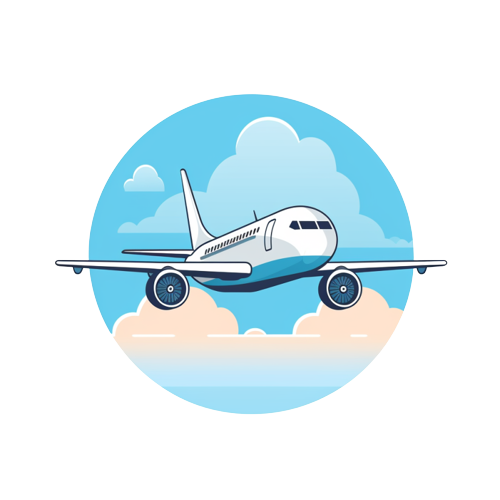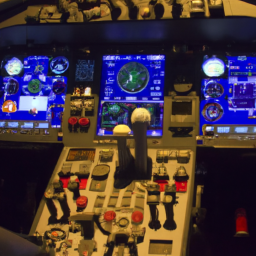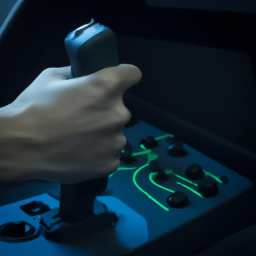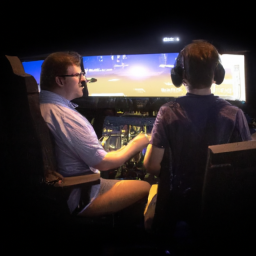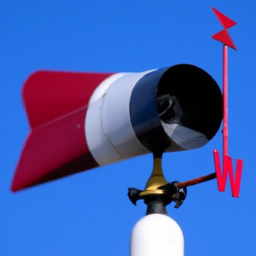In this article, we’ll explore just how realistic flight simulators can be and what you can expect while using them. We’ll delve into the different features and technologies used to create these simulations, as well as the level of accuracy they can achieve in replicating real-world aviation experiences. Whether you’re an aviation enthusiast or aspiring pilot, you’ll gain a better understanding of the capabilities and limitations of flight simulators by the end of this article. So, let’s get started and take a closer look at this intriguing topic!
Understanding Flight Simulators
Flight simulators are sophisticated tools that provide a realistic experience of flying an aircraft. They are widely used in the aviation industry for various purposes, including pilot training, aircraft design, and research. In this article, we will delve into the history, key components, accuracy, training and education, advancements, limitations, realism vs. practicality, applications, and the future of flight simulators.
What is a flight simulator?
A flight simulator is a device that replicates the experience of flying an aircraft. It consists of various hardware and software components that combine to create a virtual environment that closely resembles the real world. Flight simulators are used to train pilots, test aircraft designs, simulate emergencies, and conduct research. They provide a safe and cost-effective way to simulate different scenarios and enhance pilot skills.
History of flight simulators
The history of flight simulators dates back to the early 20th century. The Link Trainer, invented by Edwin Link in the 1920s, is considered the first flight simulator. It was primarily used for pilot training during World War II. Over the years, flight simulators have evolved significantly with advancements in technology. Today, we have highly sophisticated simulators that offer an unparalleled level of realism and immersion.
Types of flight simulators
Flight simulators come in various types, each with its own level of complexity and fidelity. The most common types include desktop simulators, which are software-based simulations that can be run on personal computers; fixed-base simulators, which provide a physical cockpit and controls; and full-motion simulators, which mimic the movements and vibrations of an actual aircraft. Each type has its own advantages and limitations, depending on the specific use case.
Key Components of Flight Simulators
Cockpit and controls
The cockpit is the central component of a flight simulator. It replicates the layout and functionality of a real aircraft cockpit, including the instrument panel, control yoke, throttle quadrant, and various switches and buttons. The controls are designed to provide a realistic feel and response, allowing the pilot to interact with the simulated aircraft in a manner similar to real-world flying.
Visual and audio systems
The visual system is crucial in creating a realistic environment for the pilot. High-resolution displays or projectors are used to render a detailed and accurate visual representation of the simulated scenario. This includes the external view of the aircraft, as well as the various instruments and gauges in the cockpit. The audio system complements the visual system by providing realistic sounds and alerts, such as engine noise, air traffic control communications, and warning sirens.
Force feedback and motion systems
Force feedback and motion systems are used to simulate the physical sensations of flying. Force feedback devices, such as joystick or control yoke, provide resistance and feedback to the pilot’s inputs, mimicking the forces experienced during flight. Motion systems, on the other hand, replicate the movements and vibrations of an actual aircraft. This adds an extra layer of immersion and realism to the simulation, allowing the pilot to feel the bumps and turbulence.
Accuracy of Flight Simulators
Flight dynamics and physics
The accuracy of a flight simulator depends on the fidelity of its flight dynamics and physics model. These models simulate the behavior of the aircraft, taking into account factors such as aerodynamics, weight and balance, engine performance, and control surfaces. Highly realistic simulators utilize advanced mathematical equations and data from real aircraft to accurately replicate the flight characteristics, allowing pilots to experience the same handling and performance as in real life.
Aircraft models and systems
Another important aspect of simulator accuracy is the fidelity of the aircraft models and systems. The simulated aircraft should closely match their real-world counterparts in terms of avionics, systems, and functionality. This includes accurate modeling of the flight instruments, navigation systems, engine controls, and various aircraft systems. The level of detail and accuracy in these models determines how realistic and informative the simulation experience is.
Weather and environmental effects
Flight simulators also aim to reproduce the weather and environmental effects that pilots encounter during their flights. This includes realistic representations of wind, temperature, humidity, visibility, and precipitation. Advanced simulators are capable of simulating turbulent air conditions, icing, fog, and other weather phenomena, providing a more immersive and challenging experience. Accurate weather simulation is essential for training pilots to handle various weather conditions and emergencies.
Training and Education
Flight training purposes
One of the primary uses of flight simulators is pilot training. Flight schools and airlines use simulators to teach aspiring pilots the fundamentals of flying, as well as advanced maneuvers and emergency procedures. Simulators provide a safe and controlled environment for pilots to practice their skills and gain experience before taking to the skies. They can simulate various scenarios, such as engine failures, instrument failures, and adverse weather conditions, allowing pilots to develop and refine their decision-making abilities.
Pilot certification requirements
Flight simulators play a crucial role in meeting the pilot certification requirements set by aviation authorities. Pilots are required to undergo a certain number of hours of flight training, which can be partially or fully completed in a simulator. The Federal Aviation Administration (FAA) and other regulatory bodies have established guidelines for simulator qualification and usage, ensuring that simulators meet the necessary standards for pilot training. Simulators are also used for recurrent training and proficiency checks to ensure pilots maintain their skills over time.
Benefits of using flight simulators in training
The use of flight simulators in pilot training offers numerous benefits. Firstly, simulators provide a safe and controlled learning environment, eliminating the risks associated with real flights. Pilots can practice emergency procedures, such as engine failures or loss of control, without endangering their lives or the aircraft. Simulators also allow pilots to repeat exercises and scenarios multiple times, facilitating skill acquisition and muscle memory. Additionally, simulators are cost-effective compared to actual flight hours, making pilot training more accessible and affordable.
Advancements in Flight Simulators
Virtual reality integration
One of the major advancements in flight simulators is the integration of virtual reality (VR) technology. VR headsets provide a more immersive and realistic experience, allowing pilots to feel a greater sense of presence and depth perception. With VR, pilots can look around the cockpit and interact with the controls naturally, enhancing their situational awareness and overall flying experience.
Improved graphics and realism
Modern flight simulators boast improved graphics and visual effects, with high-resolution textures, realistic lighting, and detailed scenery. This level of realism enhances the pilot’s immersion and makes the simulation experience more visually appealing. Complex weather effects, such as clouds, lightning, and rain, are rendered with higher accuracy, creating a truly immersive and challenging environment for pilots.
Enhanced hardware compatibility
Flight simulators have become more compatible with a wide range of hardware, allowing pilots to choose their preferred controls, displays, and peripherals. This flexibility caters to individual preferences and ensures that pilots can replicate their real-world setup as closely as possible. Compatibility with external instruments, such as GPS devices or avionics panels, adds an extra layer of realism and functionality to the simulation experience.
Limitations and Challenges
Limitations in sensory feedback
Despite their advancements, flight simulators still have limitations when it comes to replicating certain sensory experiences. For example, the lack of physical sensations, such as G-forces or vibrations, can make it challenging to fully simulate the feel of flying. Pilots rely on visual and auditory cues to compensate for this limitation, but it is still not the same as the real experience. However, the integration of force feedback and motion systems can partially address this limitation.
Difficulty in simulating emergencies
While flight simulators can simulate various emergencies, they may not fully replicate the stress and urgency that pilots experience in real-life situations. The psychological pressure and time constraints associated with emergencies are difficult to recreate in a controlled simulation environment. However, simulators provide an opportunity for pilots to practice emergency procedures and develop their decision-making skills, even if the emotional and time-sensitive aspects cannot be fully replicated.
High cost of advanced simulators
The cost of advanced flight simulators can be a significant barrier for many flight schools, smaller airlines, or individual pilots. Full-motion simulators and high-fidelity systems require extensive hardware, software, and maintenance, making them expensive to acquire and operate. However, advancements in technology are driving down costs, and more affordable simulators are becoming available, bringing the benefits of simulation training to a broader audience.
Realism vs Practicality
Balancing realism and usability
Flight simulators constantly strive to strike a balance between realism and usability. While a high level of realism is desirable, it must not impede the practicality and functionality of the simulator. Complex systems and controls may accurately replicate the aircraft but may also overwhelm or confuse the pilot. Simulators need to find the right balance of realism and user-friendliness to create an effective training tool.
The importance of user experience
User experience plays a crucial role in the effectiveness of flight simulators. The interface, controls, and overall usability should be intuitive and easy to understand. Pilots should be able to navigate through menus, access functions, and perform tasks without encountering unnecessary complexity. A positive user experience enhances the learning process, ensuring that pilots can focus on the training objectives and get the most out of their simulation sessions.
Implementing practical training scenarios
Realism does not always equate to practicality in training scenarios. While simulators strive to be as realistic as possible, they must also cater to the specific needs of pilots in training. For example, certain emergency procedures may be too dangerous to replicate accurately, such as engine fires or loss of control. In such cases, simulators can provide a simplified version of the emergency to ensure that pilots understand the procedures without exposing them to unnecessary risks.
Applications of Flight Simulators
Pilot training and currency
Flight simulators are extensively used for pilot training and maintaining currency. They provide a controlled environment for pilots to practice and develop their skills, from basic maneuvers to complex procedures and emergency scenarios. Simulators are also used for recurrent training to ensure that pilots meet the ongoing requirements of regulatory authorities. Furthermore, simulators allow pilots to practice training scenarios that are not feasible or safe to perform in actual flight situations.
Aircraft design and testing
Flight simulators are valuable tools in aircraft design and testing. Engineers and designers can use simulators to evaluate the flight characteristics and performance of new aircraft designs. Simulators allow them to analyze the behavior of the aircraft in various scenarios, such as takeoff, landing, and maneuvering, before building physical prototypes. This saves time and resources in the design process, improving the overall efficiency and safety of aircraft development.
Research and development
Flight simulators also play a crucial role in aviation research and development. They are used to study and analyze factors such as human factors, aviation safety, decision-making processes, and cockpit ergonomics. Researchers can create controlled scenarios and gather data on pilot performance, workload, and decision-making under different conditions. The insights gained from these studies can inform the development of new training methods, procedures, and technologies.
The Future of Flight Simulators
Advancements in technology
The future of flight simulators holds exciting possibilities with continued advancements in technology. Improved computing power, graphics capabilities, and virtual reality integration will further enhance the realism and immersion of simulators. Artificial intelligence and machine learning algorithms can be used to create more realistic and dynamic environments, adapting to the pilot’s behavior and providing customized training experiences.
Integration of artificial intelligence
Artificial intelligence (AI) has the potential to revolutionize flight simulators by enabling more intelligent and responsive systems. AI algorithms can analyze pilot behavior, identify areas for improvement, and provide real-time feedback and guidance. They can also simulate realistic and intelligent virtual entities, such as air traffic controllers or co-pilots, to create more interactive and realistic scenarios. AI-driven simulators could personalize training programs, adapt to individual pilot needs, and provide more efficient and effective training experiences.
Potential impact on the aviation industry
The advancements in flight simulators will have a profound impact on the aviation industry. Improved training capabilities will result in better-prepared and more skilled pilots, enhancing safety and reducing accidents. Flight simulators will also contribute to cost savings, as they offer a more affordable and accessible training alternative to actual flight hours. Furthermore, simulators will play a vital role in the development of new technologies, aircraft designs, and operational procedures, driving innovation and progress in the aviation industry.
Conclusion
Flight simulators have come a long way in providing a realistic and immersive experience of flying an aircraft. They have become invaluable tools for pilot training, aircraft design, and research. The advancements in technology have significantly improved the fidelity and usability of flight simulators, making them an essential part of the aviation industry. While simulators cannot fully replicate the actual flying experience, they offer a safe, cost-effective, and efficient way to train pilots, test aircraft, and conduct research. Continued advancements will further enhance their realism and effectiveness, bringing us closer to achieving a truly immersive and realistic flight simulation experience.
